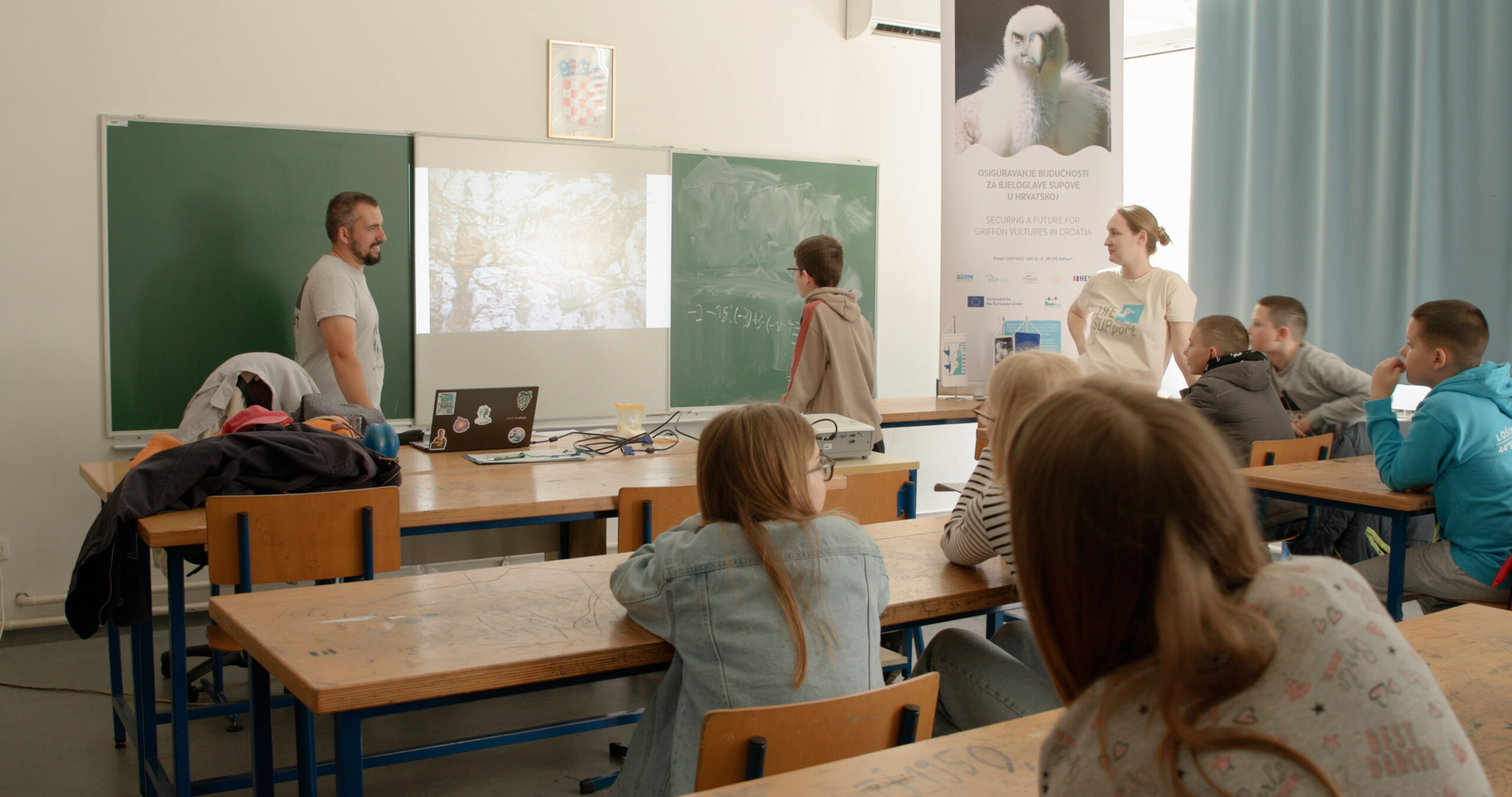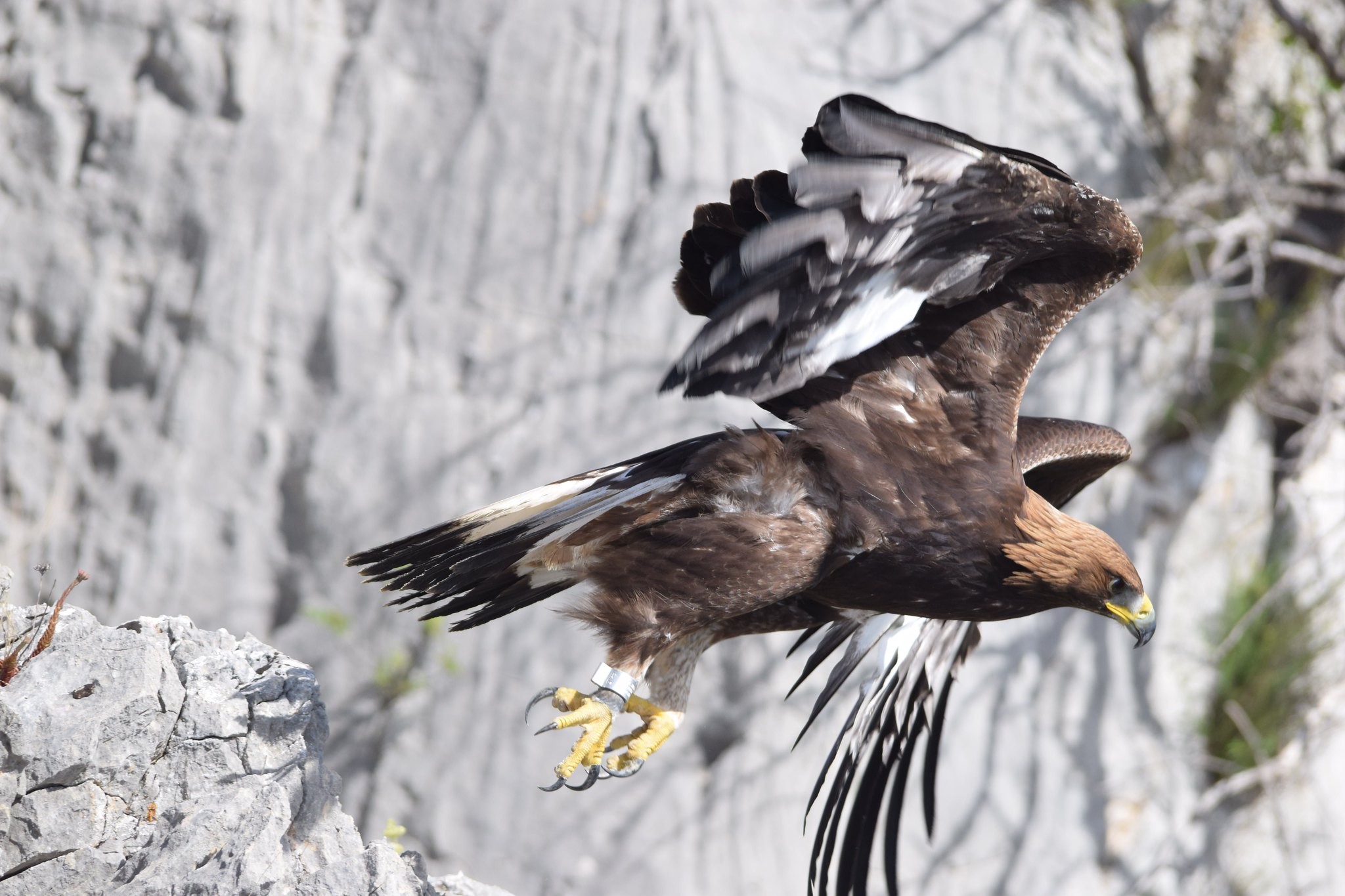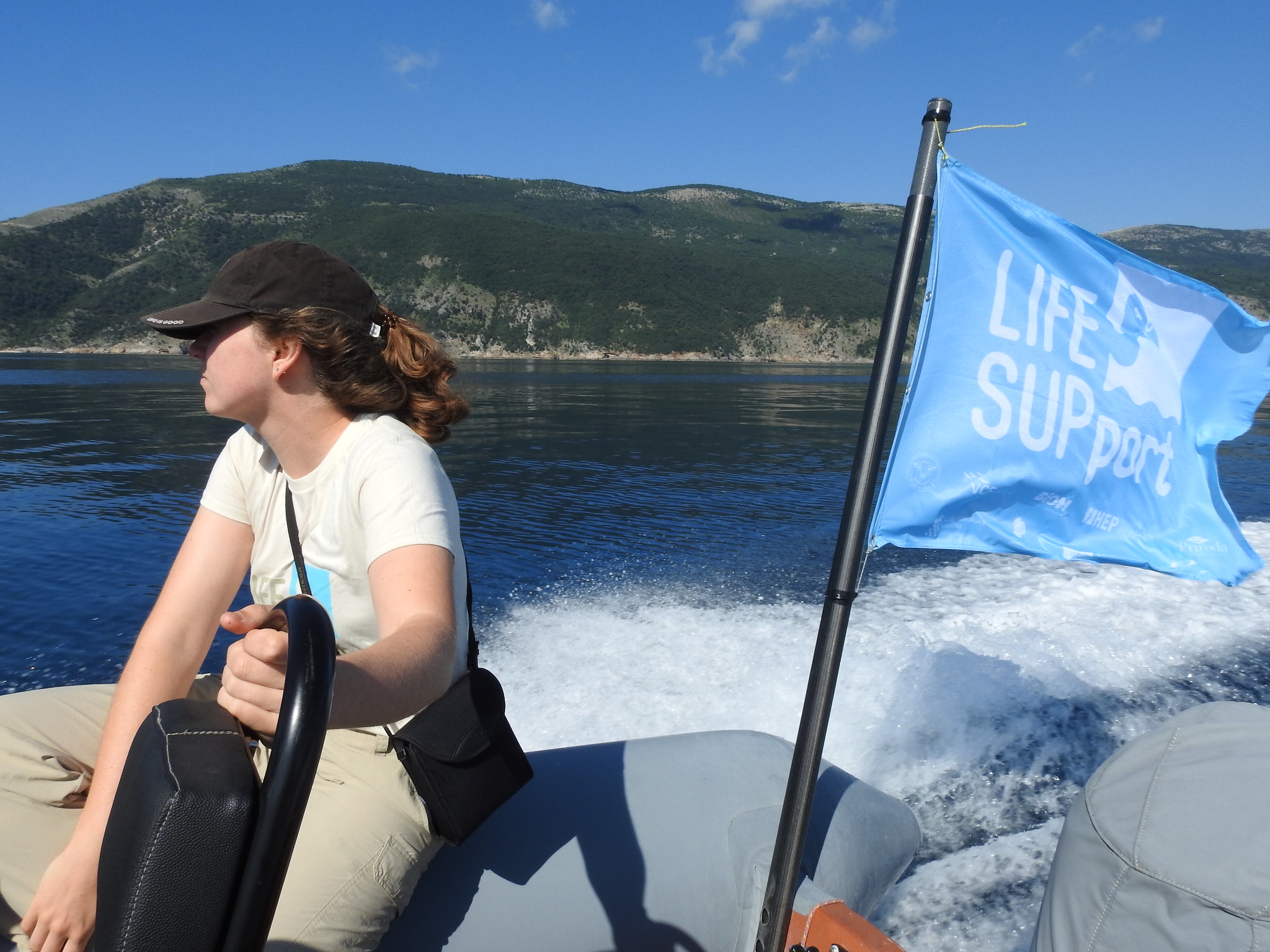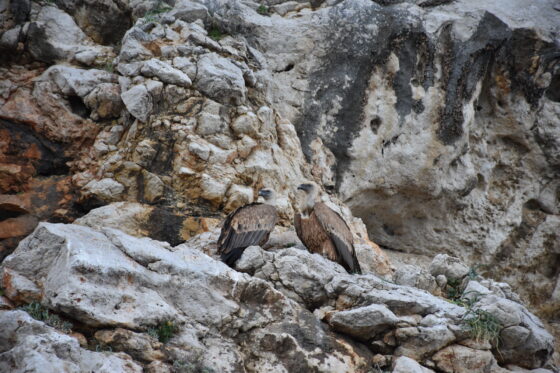
In the first days of their volunteering for Association Biom, an European Solidarity Corps volunteer Linde Lokin from Netherlands went on fieldwork to the Kvarner Gulf on 21st February for the annual winter monitoring of griffon vulture nests. Every year around February, a team from Biom goes to Cres and the surrounding islands to count the number of griffon vulture nests on the cliffs.
Vultures play an incredibly important role in the ecosystem as nature’s clean-up crew. Because they are scavengers, they eat carcasses of other dead animals, and by doing so, prevent diseases and toxins from spreading into nature. Vultures are a keystone species, meaning that without their presence, the ecosystems they live in would be drastically different, or not be able to exist at all.
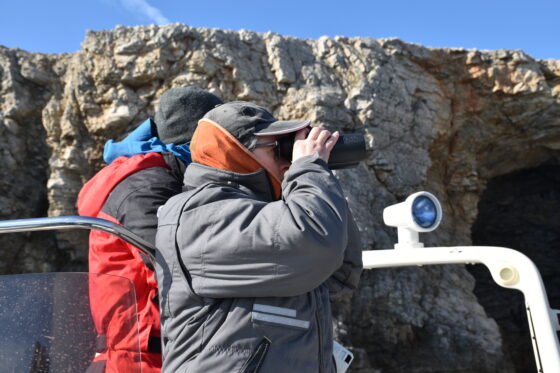
Because of their importance, it is crucial to monitor the nests and keep track of the number of breeding pairs at Kvarner. How was the first fieldwork experience in Biom for Linde? “Early in the morning we left Zagreb to drive to Krk, where Elvis was waiting for us on the boat. Dressed up warm, we left the harbour of Krk to go to Cres to pick up Daria, who has been working with griffon vultures at the Beli rescue centre for over 30 years. With vultures circling overhead, we navigated to the southern cliffs of Cres to start our fieldwork. Looking at the cliffs, I struggled to identify the first nests. Although griffon vultures stand an impressive 1,1 metres tall, with a wingspan of up to 2,8 metres, they can camouflage themselves well into the cliffs because of their greyish brown plumage. With some help from the experts however, I quickly started to pick up where and what to look for”, shared Linde their Cres experience.
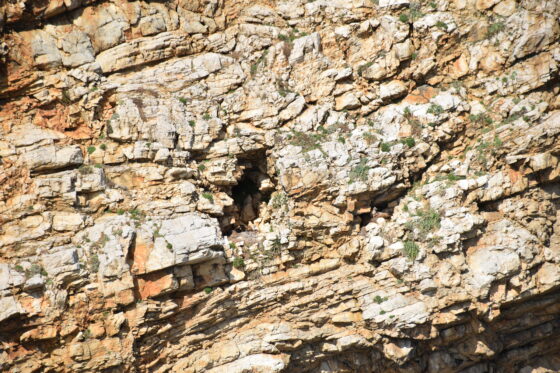
Passing by the cliffs along the coast of Cres and the island of Plavnik, we registered 70 active nests. This is only a part of the nesting Griffon vulture population, that is nesting also on the islanda Krk and Prvić, as well as on the cliffs of Učka mountain. Every nest is logged by location and tracked every following year. Knowing how many vultures nest on the cliffs helps us to protect this species and conserve the last remaining population of griffon vultures in Croatia, which is in the focus of the LIFE SUPport project. In summer, volunteers will be back in Kvarner to see how many griffon vulture chicks are reaching adulthood and keep an eye out for threats such as nest disturbance. “I am very grateful to have been given the chance to participate in this project and to continuously work on protecting this important and beautiful species”, concluded Linde.




